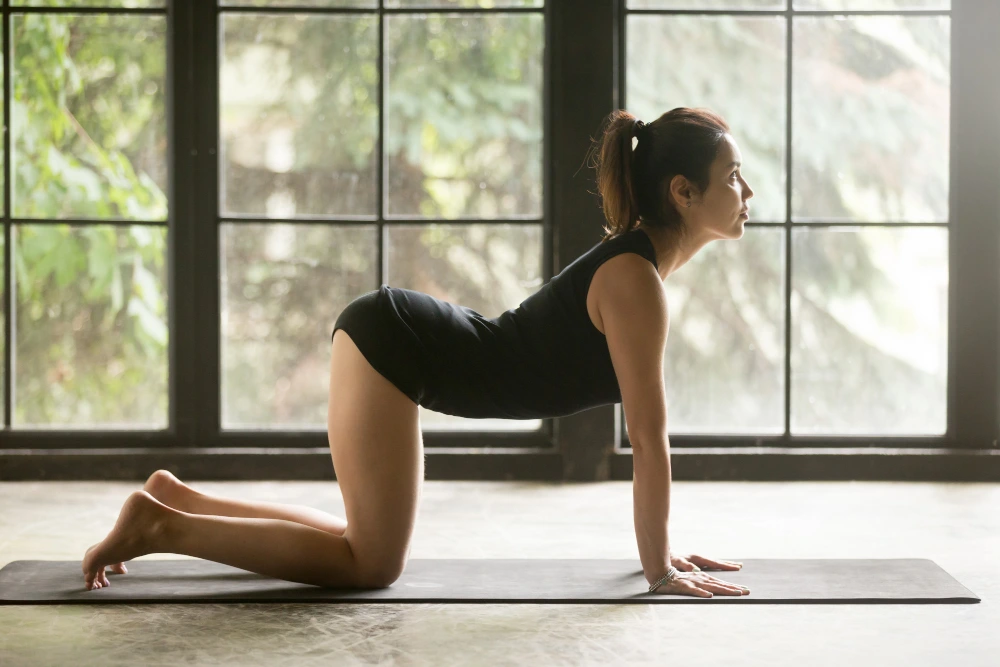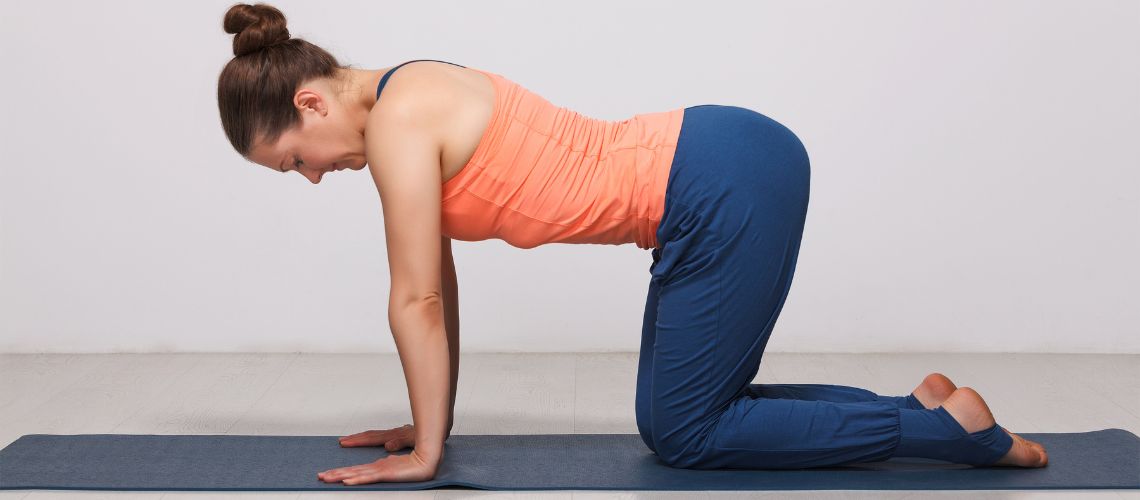Within the vast and diverse universe of yoga, Bitilasana stands out as a revitalizing pose accessible to all.
This asana, present in numerous styles of yoga, invites us to connect with the spine, the center of our body and the flow of energy that runs through it.
Although its technical name is widely recognized, many practitioners and teachers prefer to call it in a more affectionate way: the “cow pose”.

Meaning of Bitilasana
Bitilasana is a word that comes from Sanskrit, in which “bitila” means “cow” and “asana” translates as “posture” or “position”. So, literally, bitilasana is the “cow pose”.
It is an asana that invites us to the flexion and extension of the spine, seeking a dynamic mobility similar to that of a cow when it stretches.
If you're interested in Yoga Nidra, you can check out our Yoga Nidra course.
Within the world of yoga, this position is not only a physical exercise; it is a representation of the balance, grace and tranquility that a cow exudes in its natural state. If you want to learn more about the symbolism in other poses, you can consult our article on the Astavakrasana meaning.
Bitilasana is practiced in a four-legged position and is often integrated with Marjaryasana (the cat pose) to offer a complete stretch and mobility of the spine.

Bitilasana Variations
Many yoga poses can be adapted to meet different needs, and Bitilasana is no exception. This versatile pose allows adjustments that make it accessible and enriching for all types of practitioners. Here are some variations:
1. Cow Pose with Arm and Leg Extension
From the basic pose, extend one arm forward and the opposite leg back. This variation adds a challenge to balance and strengthens the core, improving coordination and stability.
2. Cow Pose with Twist
Starting from the original pose, raise your right arm towards the sky, opening your chest as you look upwards. Then, repeat the movement with the left arm. This twist offers a deep stretch in the spine and expands the chest.
3. Cow Pose with Block Support
For a more therapeutic experience or in case of wrist discomfort, place yoga blocks under your hands. This variant slightly elevates the body, reducing pressure on the wrists while maintaining the benefits of the pose.
With these adaptations, Bitilasana becomes a valuable tool for strengthening, stretching, and caring for the body in a personalized way.

Benefits of Bitilasana
Beyond being a simple posture, the cow posture is appreciated for its ability to provide physical, mental, and emotional well-being. Its regular practice can transform both the body and the mind.
Physical benefits
Bitilasana promotes healthy spine flexibility, thanks to the combination of deep flexion and extension, helping to keep it agile and resistant. In addition, it strengthens the core, as it activates the abdominal and back muscles during practice.
The compression and expansion that occurs in the abdomen also stimulates the internal organs, promoting their correct functioning.
Mental and Emotional Benefits
This posture contributes to stress reduction, especially when performed with conscious breathing, helping to release accumulated tension.
Practicing it also improves body awareness, promoting a deeper connection with our body and improving coordination. In addition, it fosters mindfulness, by focusing the mind on movement and breathing, cultivating a state of calm and presence.
At its essence, Bitilasana embodies grace, strength, and serenity. It is not just a physical exercise, but a bridge to mental tranquility and spiritual connection. By integrating this posture into your practice, you open yourself to a world of benefits that transcend the physical, inviting calm and strength with each conscious breath.






